Grow Watermelon at Home? Absolutely! Imagine biting into a juicy, sweet, homegrown watermelon on a hot summer day. Sounds idyllic, right? Well, it’s more achievable than you might think, even if you don’t have acres of farmland. For centuries, watermelons have been a symbol of summer abundance and a refreshing treat enjoyed across cultures, from ancient Egypt where they were depicted in hieroglyphics, to modern-day picnics and barbecues.
But let’s face it, buying watermelons from the store can be a gamble. You never quite know what you’re going to get until you slice it open. That’s where the magic of DIY comes in! Learning how to grow watermelon at home puts you in control, allowing you to select the variety you love, nurture it from seed to fruit, and enjoy the unparalleled satisfaction of harvesting your own delicious watermelon.
This article is packed with easy-to-follow tricks and hacks that will empower you to cultivate these delightful fruits, regardless of your gardening experience or space constraints. Whether you have a sprawling garden or a small balcony, I’m here to guide you through the process, ensuring you can enjoy the sweet taste of success – and homegrown watermelon – this summer!
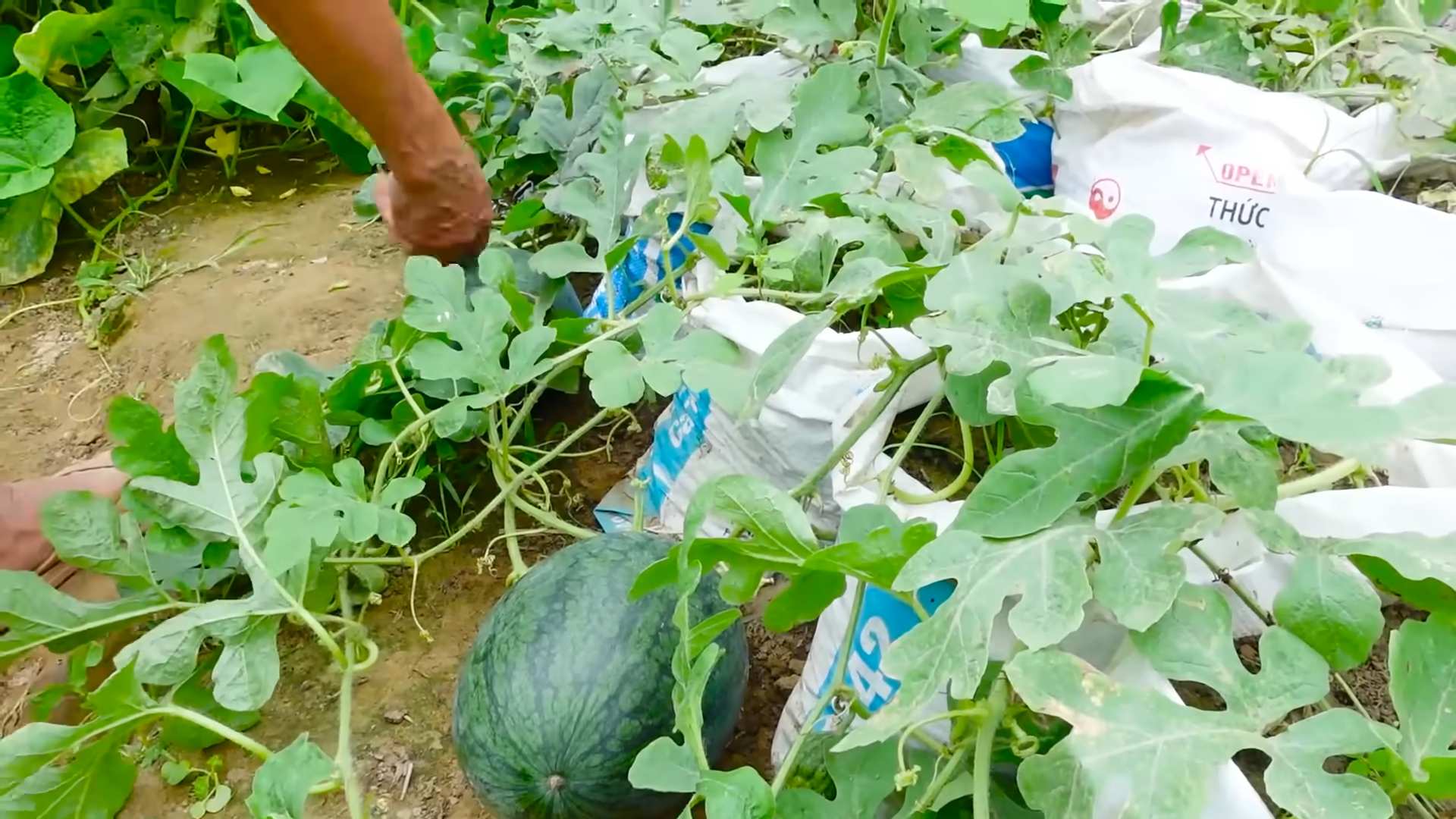
Growing Watermelons: A Sweet DIY Project for Your Backyard!
Hey there, fellow gardening enthusiasts! Ever dreamt of biting into a juicy, homegrown watermelon on a hot summer day? Well, stop dreaming and start doing! Growing your own watermelons might seem intimidating, but trust me, with a little patience and this guide, you’ll be harvesting your own sweet treats in no time. I’m going to walk you through everything you need to know, from choosing the right variety to dealing with pesky pests. Let’s get started!
Choosing the Right Watermelon Variety
Before you even think about digging, you need to pick the perfect watermelon variety for your climate and garden size. Here’s a quick rundown:
* Consider your climate: Some varieties thrive in warmer climates with long growing seasons, while others are better suited for cooler regions.
* Think about space: Watermelons need room to sprawl! Bush varieties are great for smaller gardens, while traditional varieties need plenty of space to vine.
* Choose your flavor: From classic red watermelons to yellow and orange varieties, there’s a flavor for everyone. Seedless watermelons are also a popular choice.
Some popular and reliable varieties include:
* Sugar Baby: A compact, early-maturing variety perfect for smaller gardens.
* Crimson Sweet: A classic red watermelon with excellent flavor and disease resistance.
* Jubilee: A large, oblong watermelon with a sweet, crisp flesh.
* Yellow Doll: A unique yellow-fleshed watermelon with a honey-like flavor.
* Bush Sugar Baby: A bush type of Sugar Baby, ideal for container gardening.
Preparing Your Garden Bed
Watermelons are heavy feeders, so preparing your garden bed is crucial for success. Here’s how I do it:
* Sunlight is key: Watermelons need at least 6-8 hours of direct sunlight per day. Choose a sunny spot in your garden.
* Soil matters: Watermelons prefer well-drained, sandy loam soil with a pH between 6.0 and 6.8.
* Amend the soil: Amend your soil with plenty of compost or well-rotted manure to improve drainage and fertility. I usually add a generous layer, about 4-6 inches deep.
* Raised beds are your friend: If your soil is heavy clay, consider growing watermelons in raised beds for better drainage.
Planting Your Watermelon Seeds or Seedlings
You can start watermelon seeds indoors or direct sow them in your garden. Here’s the lowdown on both methods:
* Starting seeds indoors: Start seeds indoors 3-4 weeks before the last expected frost. Use peat pots or biodegradable pots to minimize root disturbance when transplanting.
* Direct sowing: Direct sow seeds after the last frost when the soil temperature is consistently above 70°F (21°C).
Step-by-Step Planting Guide:
1. Prepare the planting holes: Dig holes about 1 inch deep and 2-3 feet apart for bush varieties, or 3-4 feet apart for vining varieties.
2. Sow the seeds: Place 2-3 seeds in each hole.
3. Cover the seeds: Gently cover the seeds with soil and water thoroughly.
4. Thin the seedlings: Once the seedlings emerge, thin them to one plant per hole, selecting the strongest seedling.
5. Transplanting seedlings: If you started seeds indoors, harden them off for a week before transplanting them into the garden. Dig holes slightly larger than the root ball and space them according to the variety’s needs. Gently remove the seedlings from their pots and plant them in the holes. Water thoroughly.
Caring for Your Watermelon Plants
Once your watermelon plants are in the ground, it’s time to provide them with the care they need to thrive.
* Watering: Watermelons need consistent moisture, especially during fruit development. Water deeply and regularly, aiming for about 1-2 inches of water per week. Avoid overhead watering, as this can promote fungal diseases. Drip irrigation is ideal.
* Fertilizing: Fertilize your watermelon plants every 2-3 weeks with a balanced fertilizer. I like to use a fertilizer with a higher phosphorus content to encourage fruit production. You can also use compost tea or fish emulsion.
* Weeding: Keep the area around your watermelon plants free of weeds. Weeds compete with watermelons for nutrients and water. Mulching can help suppress weeds and retain moisture.
* Pruning (Optional): Some gardeners prune watermelon vines to encourage larger fruit. If you choose to prune, remove any suckers (small shoots that grow from the base of the plant) and any excess vines.
* Pollination: Watermelons need to be pollinated to produce fruit. Bees are the primary pollinators. If you don’t have many bees in your area, you can hand-pollinate the flowers. To hand-pollinate, use a small paintbrush to transfer pollen from the male flowers (those with a thin stem behind the flower) to the female flowers (those with a small, immature watermelon behind the flower).
Dealing with Pests and Diseases
Watermelons can be susceptible to various pests and diseases. Here are some common problems and how to deal with them:
* Cucumber beetles: These small, yellow and black beetles can damage leaves and transmit diseases. Handpick them off the plants or use insecticidal soap.
* Squash bugs: These brown bugs suck sap from the plants, causing them to wilt and die. Handpick them off the plants or use insecticidal soap.
* Aphids: These small, sap-sucking insects can weaken the plants. Spray them with a strong stream of water or use insecticidal soap.
* Powdery mildew: This fungal disease causes a white, powdery coating on the leaves. Improve air circulation and spray with a fungicide.
* Anthracnose: This fungal disease causes dark, sunken spots on the leaves and fruit. Avoid overhead watering and spray with a fungicide.
Harvesting Your Watermelons
The moment you’ve been waiting for! Knowing when to harvest your watermelons is key to enjoying their sweet, juicy flavor. Here are a few signs that your watermelons are ripe:
* The tendril closest to the fruit turns brown and dry: This is a reliable indicator of ripeness.
* The bottom of the watermelon (where it rests on the ground) turns from white to yellow: This is called the ground spot.
* The watermelon sounds hollow when you thump it: This takes some practice, but a ripe watermelon will have a deep, hollow sound.
* The rind becomes dull and loses its shine: A ripe watermelon will have a slightly dull appearance.
Harvesting Steps:
1. Use a sharp knife or pruning shears: Cut the watermelon from the vine, leaving about 2 inches of stem attached.
2. Handle with care: Watermelons are delicate and can bruise easily.
3. Cool and enjoy: Store your watermelons in a cool, dry place. For the best flavor, chill them in the refrigerator for a few hours before eating.
Troubleshooting Tips
Even with the best care, you might encounter some challenges along the way. Here are a few troubleshooting tips:
* Watermelon plants are not producing fruit: This could be due to poor pollination, lack of nutrients, or stress from heat or drought. Make sure your plants are getting enough water and fertilizer, and consider hand-pollinating the flowers.
* Watermelon fruit is small and tasteless: This could be due to overwatering, lack of sunlight, or poor soil. Make sure your plants are getting enough sunlight and that the soil is well-drained.
* Watermelon fruit is cracking: This could be due to inconsistent watering. Try to water your plants consistently, especially during fruit development.
Extra Tips for Watermelon Success
* Mulch, mulch, mulch! Mulching helps retain moisture, suppress weeds, and regulate soil temperature.
* Rotate your crops: Avoid planting watermelons in the same spot year after year to prevent soilborne diseases.
* Protect your watermelons from sunburn: If you live in a hot climate, consider shading your watermelons during the hottest part of the day. You can use shade cloth or even just drape a light-colored sheet over them.
* Enjoy the process! Gardening is a rewarding experience, so don’t get discouraged if you encounter some challenges. Just keep learning and experimenting, and you’ll be enjoying homegrown watermelons in no time.
Growing watermelons at home is a fun and rewarding project. With a little planning and care, you can enjoy the sweet taste of homegrown watermelons all summer long. Happy gardening!
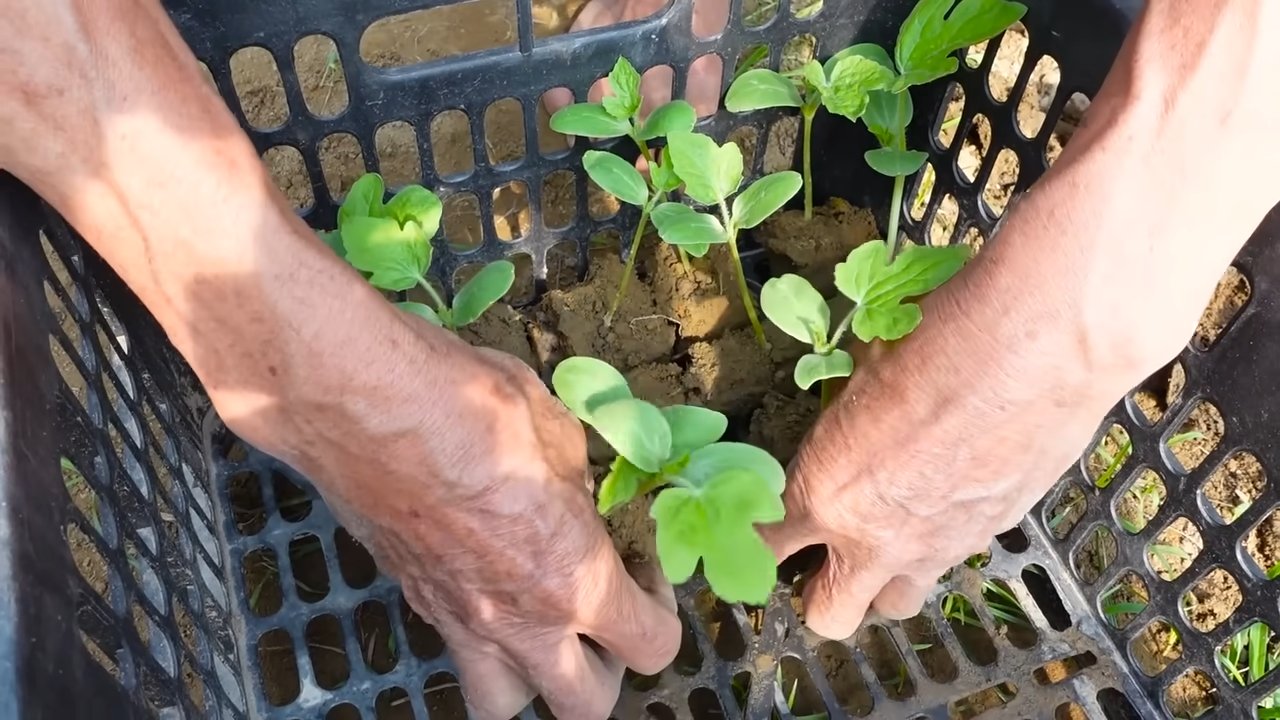
Conclusion
So, there you have it! Growing watermelons at home might seem daunting at first, but with a little planning, patience, and the right techniques, you can be harvesting your own juicy, sweet watermelons in no time. This DIY approach isn’t just about saving money; it’s about connecting with nature, understanding the food you eat, and experiencing the immense satisfaction of nurturing a plant from seed to fruit.
Why is this a must-try? Because store-bought watermelons, while convenient, often lack the intense flavor and sweetness of homegrown varieties. Plus, you have complete control over the growing process, ensuring your watermelons are free from harmful pesticides and chemicals. Imagine biting into a watermelon you grew yourself, knowing exactly where it came from and how it was cared for. That’s an experience worth pursuing.
Beyond the basic method outlined, there are plenty of ways to customize your watermelon-growing adventure. Consider experimenting with different watermelon varieties. From the classic Crimson Sweet to the smaller, personal-sized Sugar Baby, or even the yellow-fleshed varieties, each offers a unique flavor profile and growing characteristic. You can also try companion planting. Marigolds, for example, can help deter pests, while basil can improve the overall health of your watermelon plants.
Another variation to consider is vertical gardening. If you’re short on space, training your watermelon vines to grow up a trellis can be a game-changer. Just be sure to provide adequate support for the developing fruits, as they can become quite heavy. You can use slings made from old t-shirts or netting to cradle the watermelons and prevent them from breaking off the vine prematurely.
Don’t be afraid to experiment with different soil amendments and fertilizers. Watermelons are heavy feeders, so providing them with the nutrients they need is crucial for optimal growth and fruit production. Compost, well-rotted manure, and organic fertilizers can all work wonders. Remember to monitor your plants closely and adjust your feeding schedule as needed.
Ultimately, the key to successful watermelon growing is observation and adaptation. Pay attention to your plants’ needs, learn from your mistakes, and don’t be discouraged by setbacks. Every growing season is a learning opportunity.
We wholeheartedly encourage you to give this DIY trick a try. The reward of biting into a homegrown watermelon is well worth the effort. And remember, the journey is just as important as the destination. Embrace the process, enjoy the connection with nature, and savor the sweet taste of success.
We’d love to hear about your experiences! Share your photos, tips, and challenges in the comments below. Let’s create a community of home gardeners who are passionate about growing their own delicious watermelons. Happy growing! Let us know how your **grow watermelon at home** project goes!
FAQ
What is the best time to start growing watermelons?
The best time to start growing watermelons depends on your climate. Watermelons are warm-season crops and require a long growing season of at least 70-90 days. In general, you should start seeds indoors about 6-8 weeks before the last expected frost. If you live in a warmer climate with a longer growing season, you can direct sow seeds outdoors once the soil temperature reaches at least 70°F (21°C). Make sure all danger of frost has passed before transplanting seedlings or direct sowing.
What kind of soil do watermelons need?
Watermelons thrive in well-drained, sandy loam soil that is rich in organic matter. The ideal soil pH is between 6.0 and 6.8. Before planting, amend your soil with compost, well-rotted manure, or other organic amendments to improve drainage, fertility, and water retention. Avoid heavy clay soils, as they can become waterlogged and hinder root growth. If you have clay soil, consider growing watermelons in raised beds or containers.
How much sunlight do watermelons need?
Watermelons need at least 6-8 hours of direct sunlight per day to thrive. Choose a planting location that receives full sun throughout the day. Insufficient sunlight can result in poor fruit production and smaller, less flavorful watermelons.
How often should I water my watermelon plants?
Watermelons need consistent watering, especially during hot, dry weather. Water deeply and regularly, aiming to keep the soil consistently moist but not waterlogged. Water at the base of the plants to avoid wetting the foliage, which can increase the risk of fungal diseases. As the fruits begin to ripen, you can reduce watering slightly to concentrate the sugars and improve flavor.
How do I know when my watermelons are ripe?
Determining when a watermelon is ripe can be tricky, but there are several indicators to look for:
* **The tendril closest to the fruit turns brown and dries out:** This is a reliable sign that the watermelon is nearing maturity.
* **The underside of the watermelon (where it rests on the ground) turns from white to a creamy yellow:** This is often referred to as the “ground spot.”
* **The watermelon sounds hollow when you thump it:** A ripe watermelon will have a deep, resonant sound when thumped.
* **The skin becomes dull and less shiny:** A ripe watermelon will lose its glossy sheen.
Do watermelons need fertilizer?
Yes, watermelons are heavy feeders and benefit from regular fertilization. Use a balanced fertilizer (e.g., 10-10-10) at planting time, and then side-dress with a nitrogen-rich fertilizer when the vines begin to run. Once the fruits start to develop, switch to a fertilizer that is higher in phosphorus and potassium to promote fruit growth and sweetness. Follow the instructions on the fertilizer label carefully to avoid over-fertilizing.
How can I protect my watermelons from pests and diseases?
Watermelons are susceptible to various pests and diseases, including aphids, squash bugs, vine borers, powdery mildew, and fusarium wilt. To protect your plants, practice good garden hygiene, such as removing plant debris and weeds regularly. Use insecticidal soap or neem oil to control aphids and squash bugs. Wrap the base of the stems with aluminum foil to deter vine borers. Choose disease-resistant watermelon varieties and provide good air circulation to prevent fungal diseases.
Can I grow watermelons in containers?
Yes, you can grow watermelons in containers, but you’ll need a large container (at least 20 gallons) and a dwarf or bush variety of watermelon. Use a well-draining potting mix and provide regular watering and fertilization. Container-grown watermelons may require more frequent watering than those grown in the ground.
How do I pollinate my watermelon flowers?
Watermelons have separate male and female flowers. Bees are the primary pollinators, but if you’re not seeing enough bee activity, you may need to hand-pollinate the flowers. To hand-pollinate, use a small paintbrush to transfer pollen from the male flower to the female flower. The female flower has a small, immature watermelon at its base.
What are some common problems when growing watermelons?
Some common problems when growing watermelons include:
* **Poor fruit set:** This can be caused by insufficient pollination, cool weather, or nutrient deficiencies.
* **Blossom end rot:** This is caused by a calcium deficiency and can be prevented by ensuring consistent watering and adding calcium to the soil.
* **Cracking fruits:** This can be caused by inconsistent watering or rapid changes in temperature.
* **Pest and disease infestations:** Monitor your plants regularly and take action to control pests and diseases as needed.
By addressing these potential problems proactively, you can increase your chances of a successful watermelon harvest.

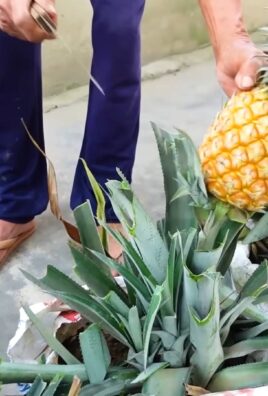
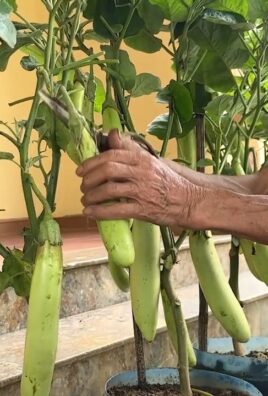
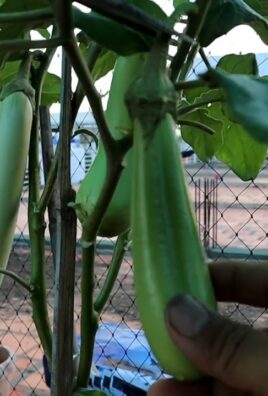
Leave a Comment